21 vintage photos show how desperate and desolate America looked during the Great Depression
Natalie Colarossi,Talia Lakritz

- The Great Depression was the worst economic crisis in US history, when unemployment reached 25%.
- When the pandemic hit in 2020, Americans hadn't felt that level of economic tragedy in a century.
During the Great Depression, the most tragic economic collapse in US history, more than 15 million Americans were left jobless and desperate for an income.
By 1932, nearly one in four Americans was out of a job, and by 1933, unemployment levels reached an estimated 25%.
For comparison, during the coronavirus pandemic, the US unemployment rate spiked to 14.7% in April 2020.
These photos reveal how desolate the country looked during the Great Depression, when food and job lines stretched for blocks.
This story was originally published in May 2020 and was updated in July 2024.
The Great Depression was the worst economic tragedy in American history.
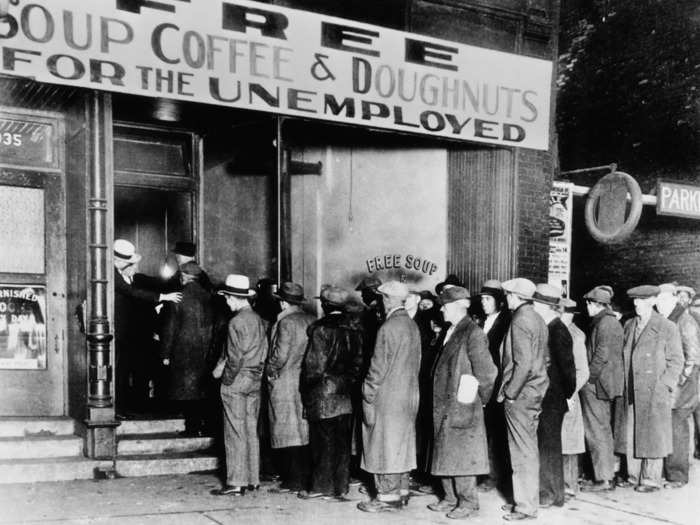
The crisis resulted in skyrocketing rates of unemployment, hunger, and desperation.
Following a period of booming prosperity in the 1920s, the Great Depression began when the US stock market crashed in 1929.
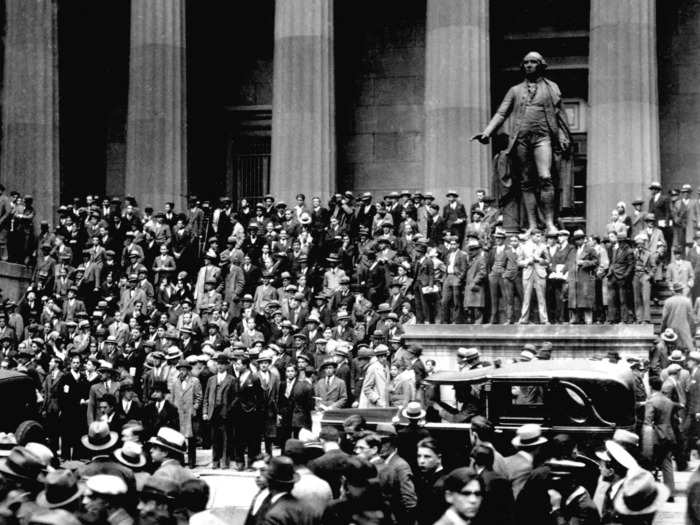
Known as Black Thursday, the 1929 crash was attributed in part to a vast imbalance of wealth between the rich and poor, a fervent production of goods, little to no wage gains, an increase in personal debt, and government mismanagement.
Over the course of the decade, more than 15 million Americans lost their jobs.
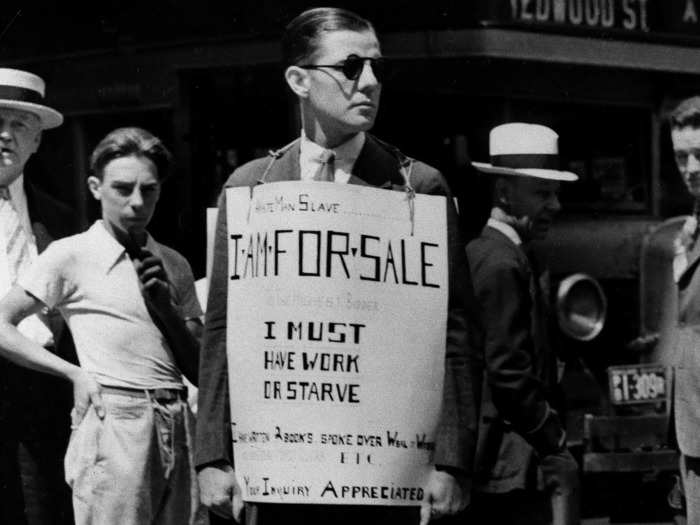
The effects of the Great Depression could be felt into the early 1940s.
The unemployment rate jumped at a shocking speed.
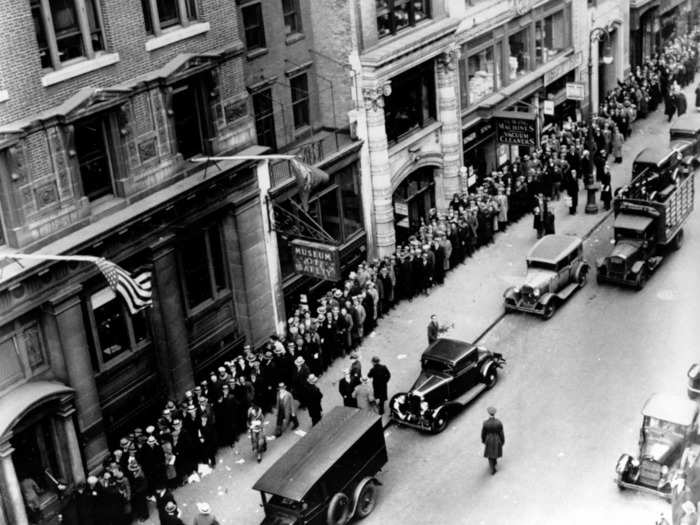
From 1929 to 1930, unemployment rose from fewer than 3 million to 4 million, according to figures cited by the University of Houston's Digital History archive. In 1931, it doubled to 8 million, and by 1932, unemployment levels reached a staggering 12.5 million.
By that year, one out of every four US workers was unemployed.
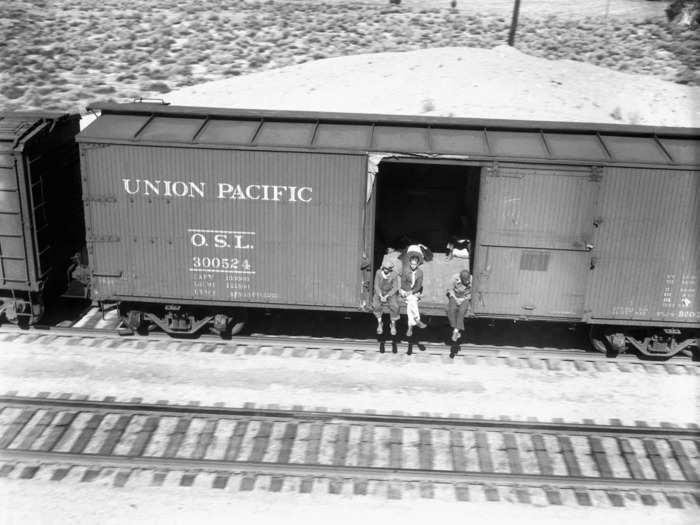
Thousands of Americans lost their homes, and hundreds of thousands attempted to travel through the country on foot or by boxcar to find work, according to the Library of Congress.
Those who were fortunate enough to remain working often suffered large pay cuts and decreased hours.
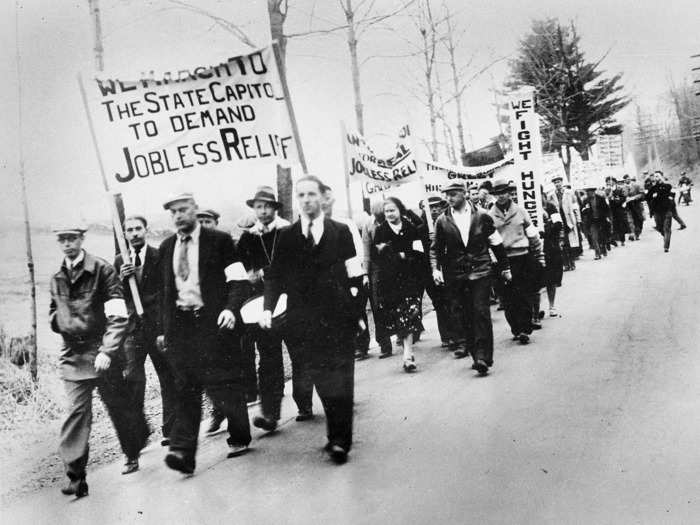
By 1932, 75% of all remaining workers were on a part-time schedule, according to the University of Houston's Digital History archive.
Families who were unable to pay rent were frequently evicted from their homes.
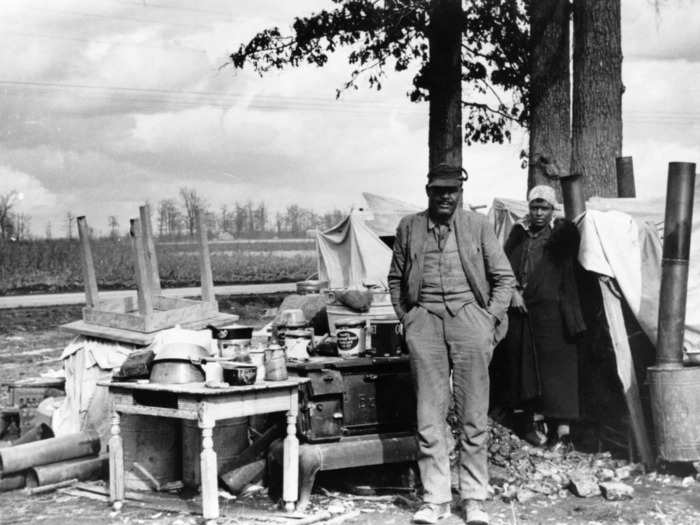
Vagrants looking for work on public trains were kicked to the curb.
The struggle for money became so desperate that families across the country often lived in crowded shacks.
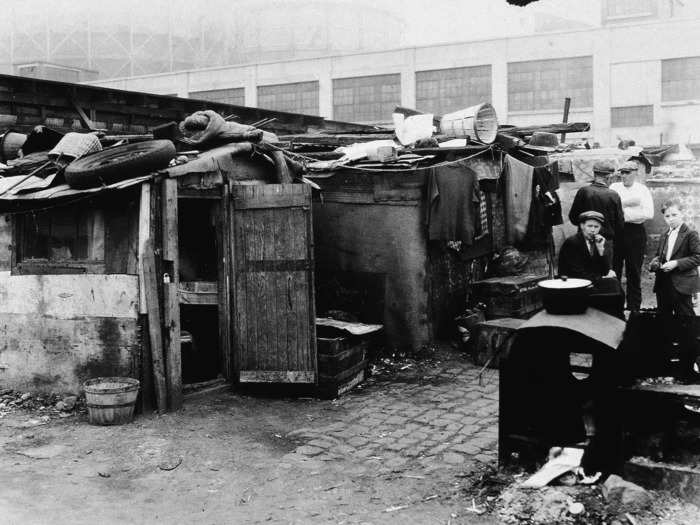
Some families inhabited caves or sewer pipes out of desperation.
During the winters of 1932 and 1933, an estimated 1.2 million Americans were homeless.
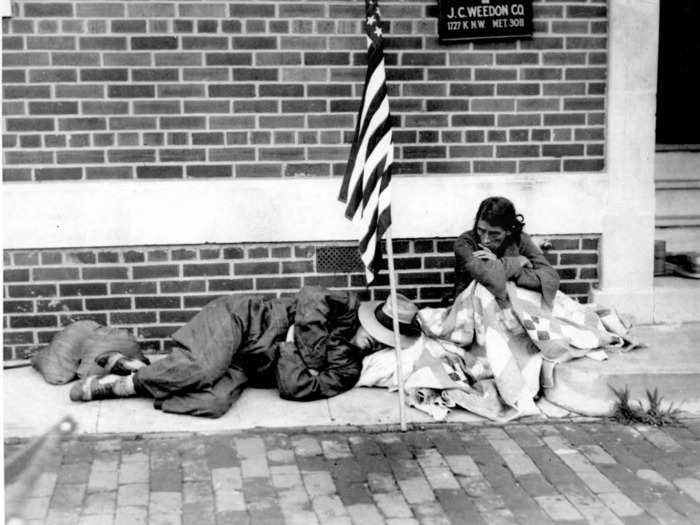
The population of the US at that time was about 125 million, according to the US Census Bureau.
In an effort to save money, families planted their own gardens, canned foods, bought old bread, sought out soup kitchens, and stopped buying common items like milk.
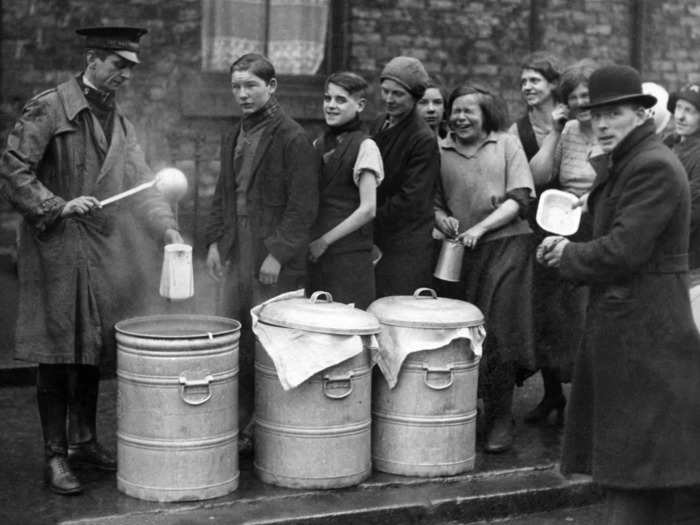
Many also sacrificed medical and dental care because they couldn't afford it.
Food banks became commonplace.
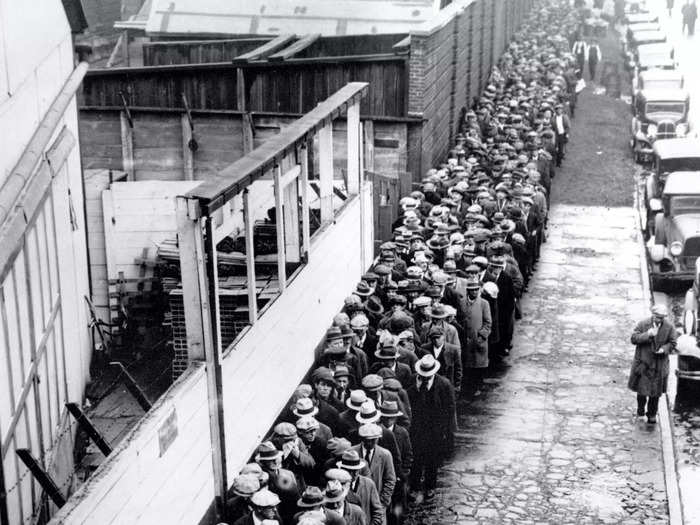
Lines for food ration programs and free meals exploded across the country.
At the beginning of the Depression, President Herbert Hoover largely dismissed the stock market crash as a "passing incident in our national lives."
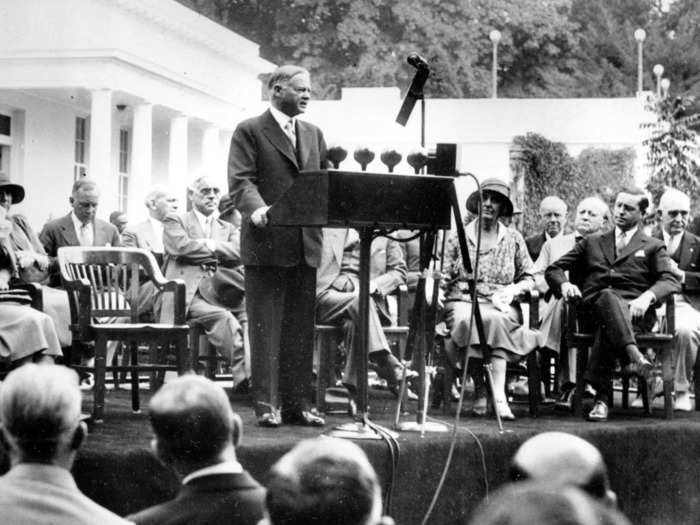
Hoover did not believe in offering federal aid to the impoverished or using the power of the federal government to manage prices or currency, according to the Gilder Lehrman Institute of American History.
Americans grew angry, and Hoover became widely blamed for the economic turmoil.
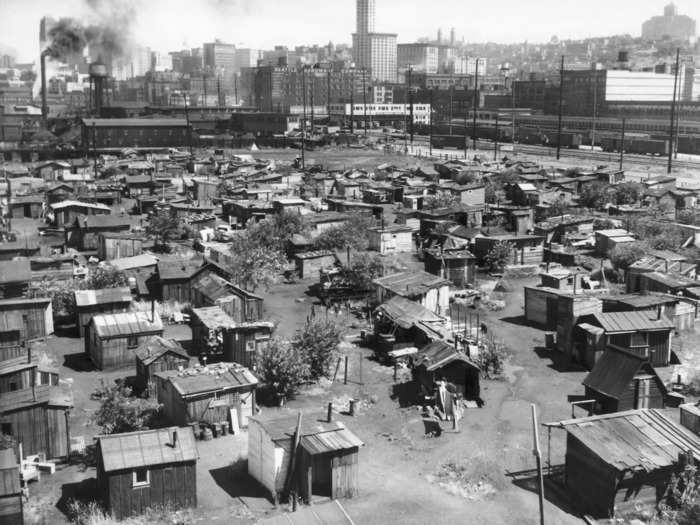
Impoverished people living in shantytowns across the country started referring to them as "Hoovervilles," and empty pockets turned inside out were known as "Hoover flags."
Desperate Americans threatened with hunger and starvation began organizing marches and labor riots.
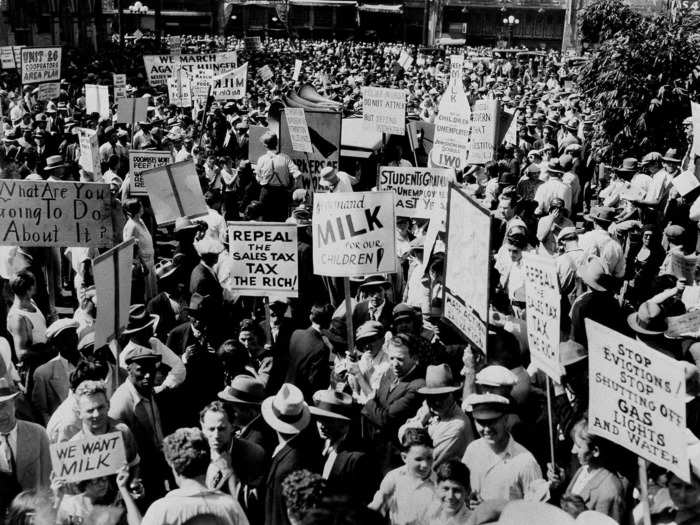
In 1932, 20,000 veterans of World War I marched to the Capitol to demand the payment of bonuses that they were scheduled to receive in 1945, according to the Library of Congress. The bill to do so did not pass in Congress.
The following year, 10,000 unemployed people joined a "hunger march" in Los Angeles.
The Depression also had a negative impact on family life as many couples delayed their marriages or postponed having children.
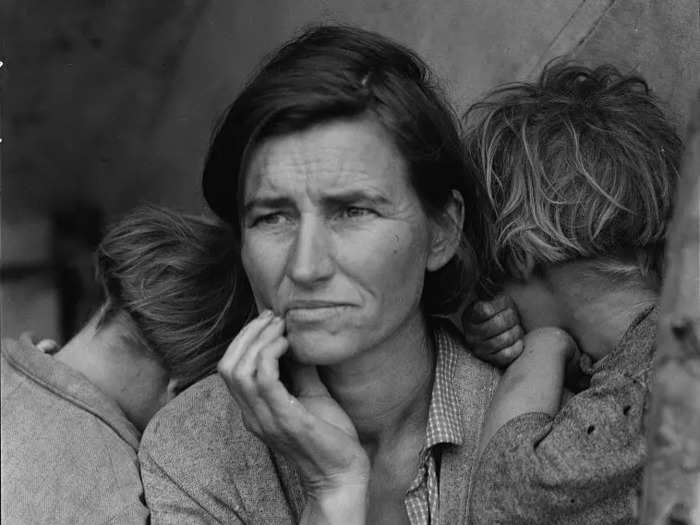
Throughout the decade, separation rates grew. By 1940, there were 1.5 million American women living apart from their husbands, according to the University of Houston's Digital History archive.
Children were adversely affected, as well.
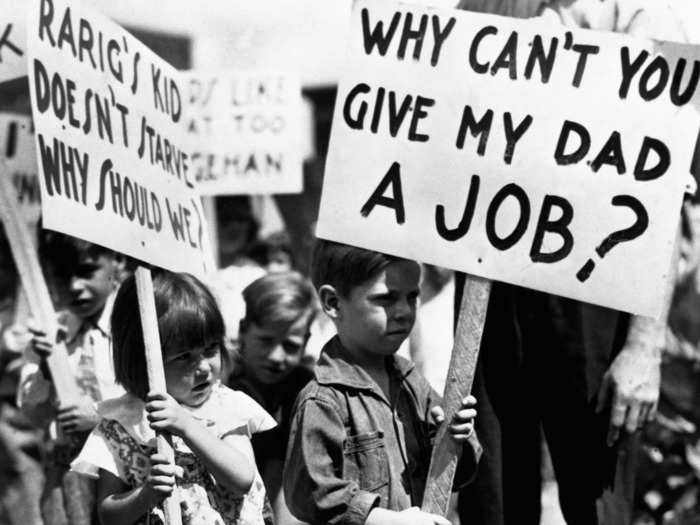
An estimated 200,000 vagrant children wandered the streets of America due to the break-up and collapse of their families, according to Virginia Commonwealth University's Social Welfare History Project.
Black and Mexican communities experienced higher rates of unemployment and discrimination during the Depression.
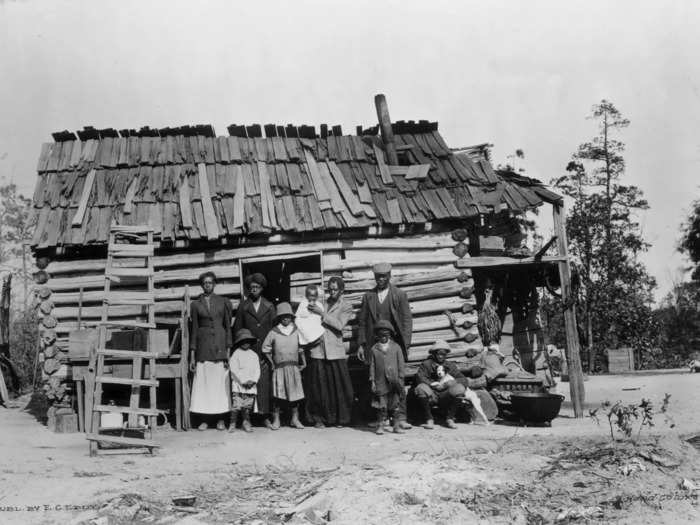
Half of Black workers were unemployed by 1932 compared to the general unemployment rate of 25%, according to the Library of Congress. In Southern states, the percentage of unemployed Black workers was even higher.
Over the course of the Depression, authorities deported an estimated 400,000 Mexican Americans over fears of workplace competition, according to the Gilder Lehrman Institute of American History. Many of those people were American citizens.
The Depression had a significant impact on the psychology of unemployed men.
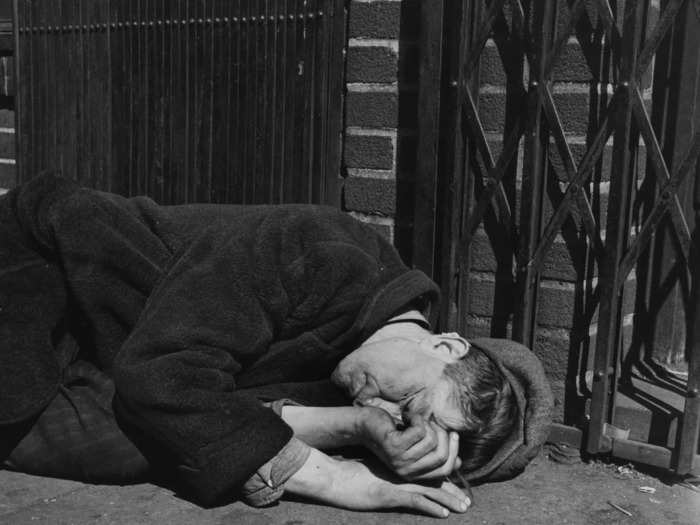
As men struggled to provide for their families as cultural breadwinners, some turned to alcohol to cope, while others became abusive or gave up hope altogether.
Suicide rates increased during the Great Depression.
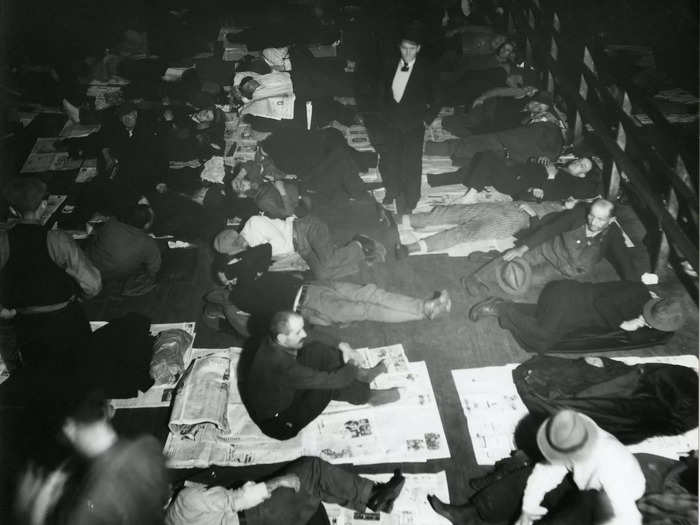
Suicide rates peaked when unemployment reached high points in 1932 and 1938, according to the US National Library of Medicine.
President Franklin Delano Roosevelt was elected in 1933 and shepherded the New Deal through Congress.
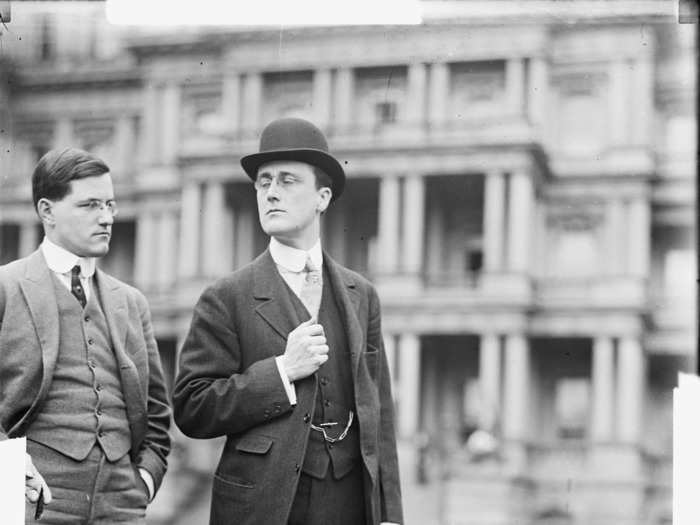
The set of emergency relief programs, work programs, and large-scale government reforms implemented by Roosevelt helped boost the economy. The US's entrance into World War II in 1941 jumpstarted American manufacturing.
The Great Depression had lasting effects on the US.
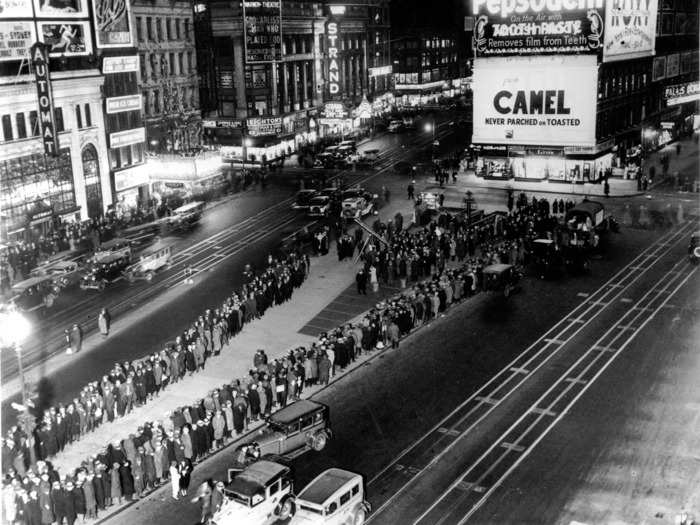
Its aftermath fundamentally changed the relationship between Americans and their government and led to the development of more government programs, responsibility, and involvement.
Popular Right Now
Popular Keywords
Advertisement